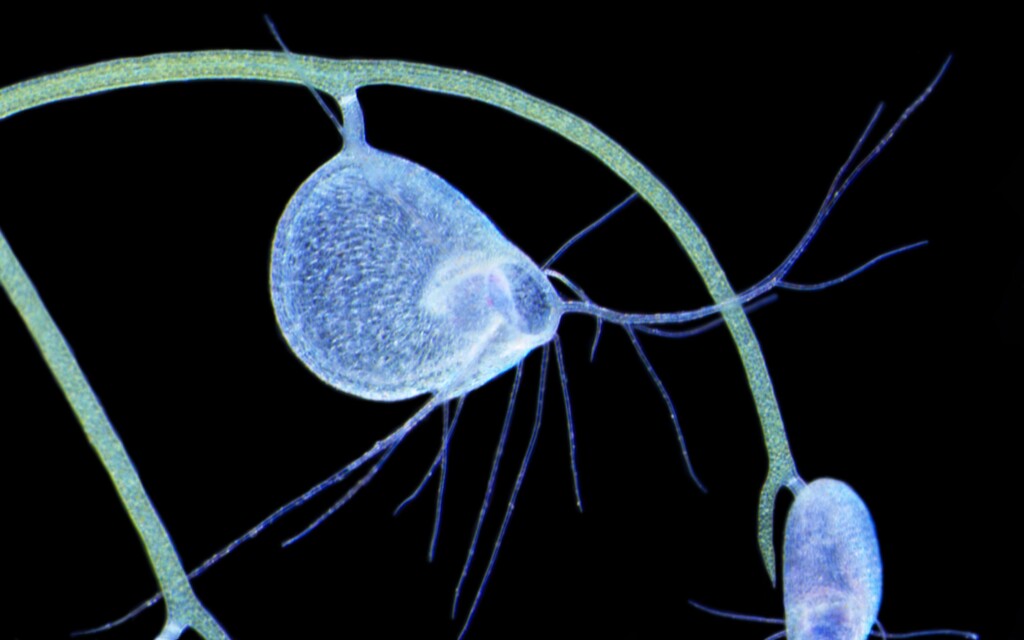Utricularia gibba
L. Floating BladderwortAffixed or suspended aquatic annual or perennial with branched filiform stolons to c. 20 cm long. Leaves alternate, 4-8(-15) mm long, divided from base into 2 (rarely only 1), c. equal capillary segments, these occasionally sparsely dichotomously divided. Traps ovoid, 1-2.5 mm long, mouth lateral. Raceme usually emergent, erect, mostly 1-20 cm long, 1-12-flowered; sterile bract usually 1, in upper half of peduncle, cuneate, 1-1.2 mm long; fertile bracts basifixed, c. 1 mm long; bracteoles absent; calyx-lobes subequal, broad-ovate to orbicular, 1-3.5 mm long. Corolla 4-25 mm long, yellow; upper lip broad-ovate to suborbicular; lower lip slightly smaller, orbicular to transversely elliptic, palate with bilobed basal swelling, often with reddish-brown lines; spur narrowly conical or cylindric, typically longer than lower lip. Capsule globose, 2-3 mm diam.; seeds lenticular, 0.8-1 mm diam. Flowers Nov.-Jun. Flowers Nov.–Jun.
GipP, EGL, HSF, Strz. Also NT, Qld, NSW. New Zealand, New Caledonia, Asia, Africa, North and South America, and a common weed of aquaria and botanic gardens throughout the world. Occurs in fresh-water swamps and wetlands at low elevations. At least some collections from Victoria such as the single collection from East Gippsland are consistent with the continuous distribution of this species across northern and eastern Australia, suggesting that these plants may be native in Victoria. However, collections from urban areas around Melbourne are believed to be introduced.
Jeanes, J.A. (1999). Lentibulariaceae. In: Walsh, N.G.; Entwisle, T.J., Flora of Victoria Vol. 4, Cornaceae to Asteraceae, pp. 547–553. Inkata Press, Melbourne.
 Spinning
SpinningLowrie, A. (2013). Carnivorous Plants of Australia: Magnum Opus vol. 3. Redfern Natural History Productions Ltd., Poole, Dorset, England.





